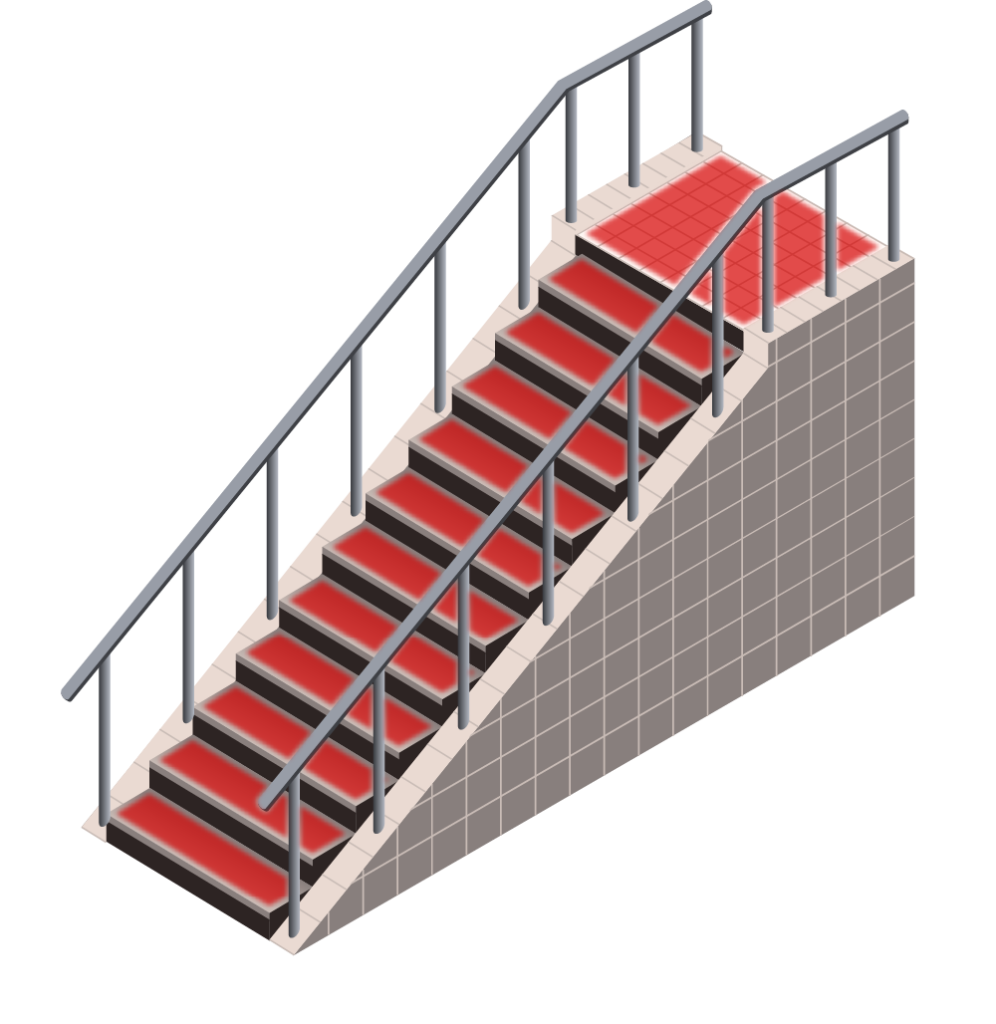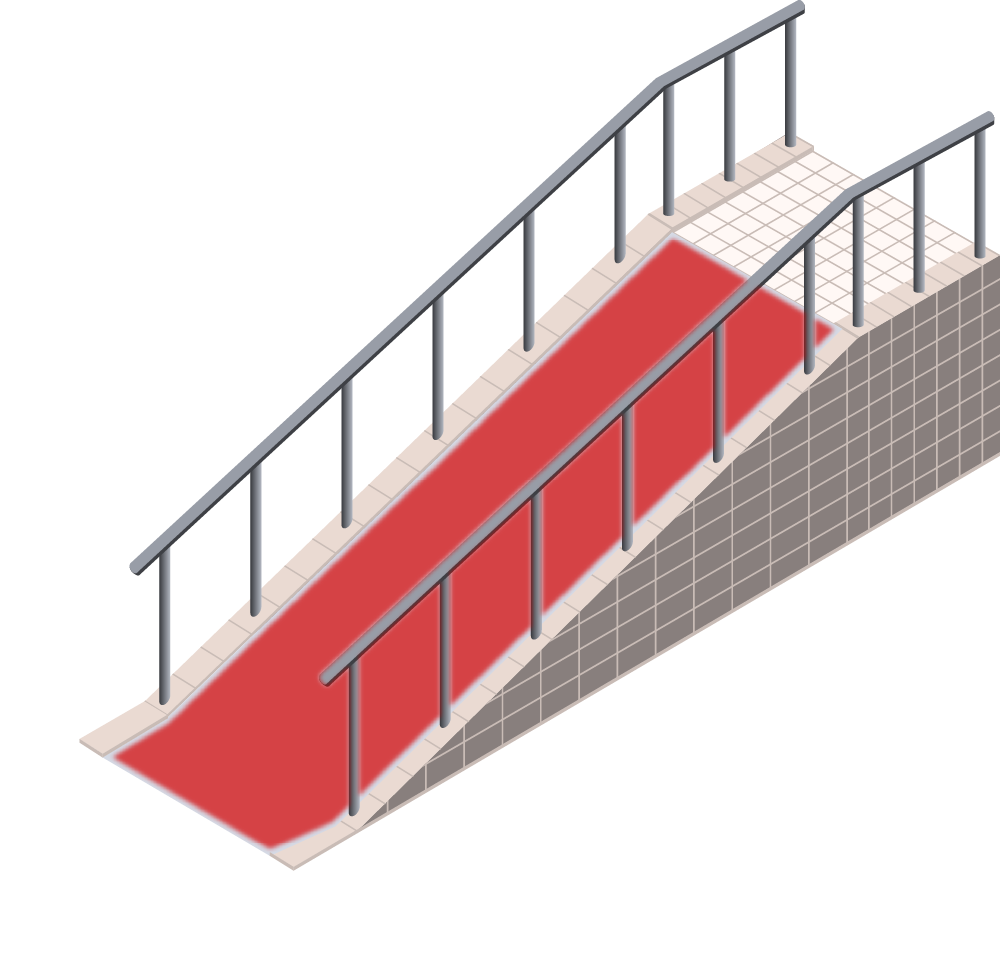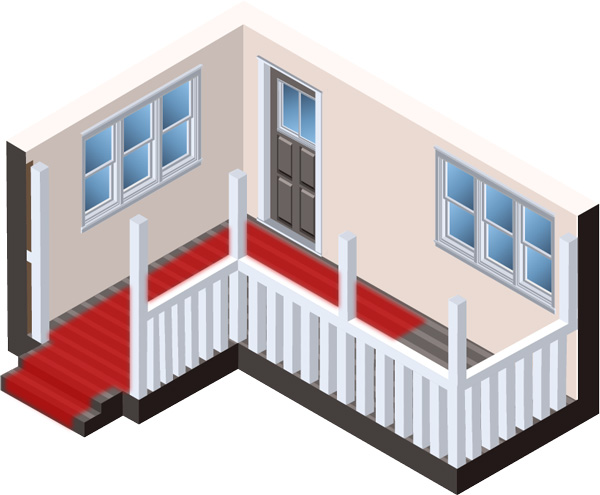Home / Slip & Fall Problem Areas / Structures
SLIP & FALL PROBLEMS ON BUILDING STRUCTURES
Slips, trips and falls can occur just about on any structure in your home (well, maybe on the walls or ceilings), but certain structures do tend to increase your risk of a fall. In this section of the website we examine some specific architectural constructs that tend to be places where we slip and fall.
STAIRS
Ascending or descending stairs was responsible in 2013 for over 1.3 million injuries that required an emergency room visit, according to a 2013 US consumer Product Safety Commission Report. In fact, nearly 15% of all fall-related injuries are the result of accidents that happen on the stairs. We will dive into the various slip-and-fall dangers of both indoor and outdoor stairs and how you can dramatically reduce your risk.

RAMPS
With the passage of the Americans with Disabilities Act in 1991, ramps and inclined walkways became ubiquitous structures in our everyday lives. While ramps are invaluable in providing access to those with ambulatory disabilities, they also can become slip-and-fall hazards, especially when exposed to inclement weather. Ramps typically have an incline of 5 to 10 degrees which, with gravity, is more than enough to disrupt our balance and cause a fall.
PORCHES & DECKS
Porches and decks are not, in and of themselves, inherently more dangerous than any other walking surface. However, because these structures are subject to rain, ice and snow they become slip-and-fall hazards due to the environmental conditions. Porches and decks, when hidden from the sun, can also become fertile ground for mold and algae to grow, which transforms the structure from safe to slippery.

